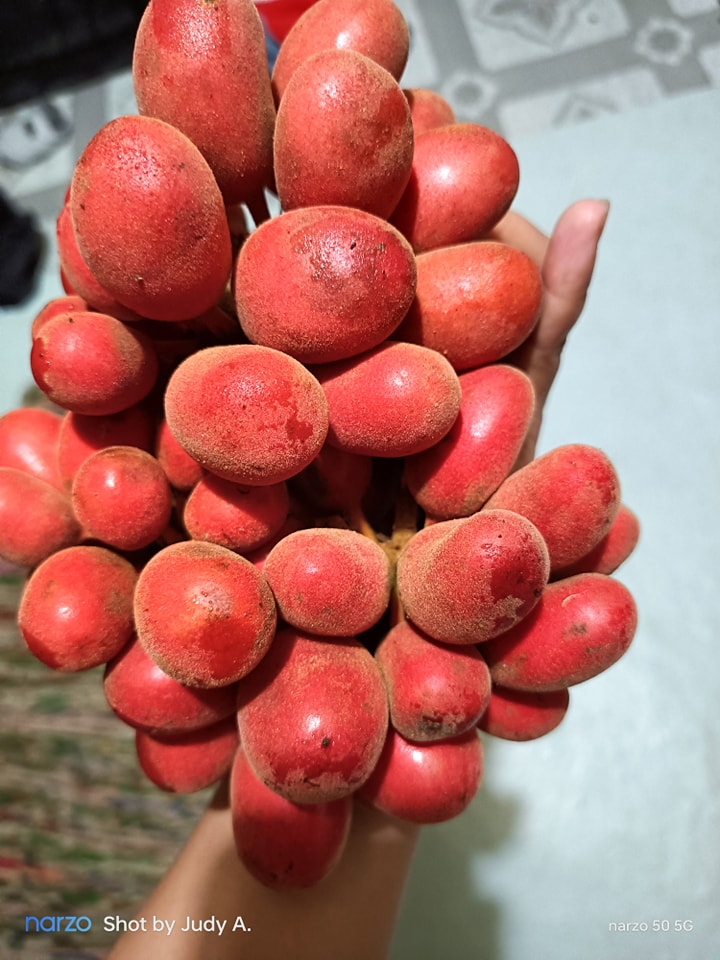Love it? Add to your wishlist
Your favorites, all in one place. Shop quickly and easily with the wishlist feature!
[message]
[title]
[message]




Veliyath Gardens
Couldn't load pickup availability
Kriel Fruit Plant: An Exquisite Tropical Treasure for Your Garden
The Kriel fruit plant (Uvaria sp) is a rare and fascinating tropical climbing shrub known for its vibrant fruits and culinary versatility. Native to the lush forests of Cambodia, this unique plant has started to garner attention across different regions, including Thailand and Vietnam, where it thrives in warm, humid conditions. Its exotic appeal, both in terms of appearance and taste, makes it an excellent addition to any fruit plant garden.
With its eye-catching fruits that range from deep red and golden yellow to bright orange, the Kriel plant captivates gardeners and culinary enthusiasts alike. Its distinctively sweet, granular flesh and pleasant aroma make it a delicacy in local markets and an exciting choice for those looking to grow something extraordinary.
Common Names: Kriel
Botanical Name: Uvaria sp
Botanical Family: Annonaceae
Type: Woody Climbing Shrub
Native Regions: Cambodia, Thailand, Vietnam
Blooming and Fruiting Period: Begins fruiting at around three years
Maintenance Requirements: Moderate, with regular pruning and support for climbing growth
The Kriel fruit is cherished for its unique texture and mildly sweet flavor. The pulp is slightly granular, offering a pleasant contrast between soft and firm elements, making it enjoyable when eaten fresh. Some describe its taste as a harmonious blend of tropical sweetness with subtle tangy undertones, making it an exciting ingredient in various dishes.
Fresh Consumption: Eaten raw, the fruit provides a refreshing, mildly sweet burst of flavor.
Desserts: Ideal for making jams, jellies, and exotic fruit preserves.
Beverages: Can be blended into smoothies or tropical fruit punches for an added touch of natural sweetness.
Gourmet Cooking: Some chefs experiment with Kriel in sauces and chutneys, using its distinct texture to create innovative culinary experiences.
Local Delicacies: In Cambodia and Thailand, the fruit is often incorporated into traditional desserts or dried for later consumption.
Beyond its delightful taste, the Kriel fruit offers an impressive nutritional profile, making it a valuable addition to a healthy diet.
Rich in Antioxidants: The vibrant color of the fruit is a sign of its high antioxidant content, helping to combat oxidative stress and promote overall cellular health.
Dietary Fiber: Supports digestion and maintains gut health.
Vitamins and Minerals: Contains essential vitamins like Vitamin C, which strengthens immunity, and trace minerals beneficial for bone health and energy metabolism.
Natural Sugars: Provides a quick source of energy without artificial additives, making it a nutritious snack choice.
In some cultures, the fruit is believed to have cooling properties and is consumed during hot seasons to prevent dehydration.
Its pulp is used in traditional herbal remedies to support digestion and alleviate minor stomach ailments.
Some regions use extracts of the fruit in skin-care treatments due to its antioxidant and hydrating properties.
The Kriel fruit plant is relatively easy to cultivate, provided the right conditions are met. It thrives in tropical and subtropical regions and is well-suited for home gardens, orchards, and fruit plant nurseries.
Climate: Prefers warm, humid environments typical of tropical regions.
Sunlight: Flourishes in full to partial sunlight, adapting to different levels of shade depending on the climate.
Soil Requirements: Thrives in well-drained, fertile soil enriched with organic compost.
Watering Needs: Requires regular watering, especially during the growth phase. However, it is moderately drought-tolerant once established.
Pruning: Regular pruning is necessary to control its climbing growth and encourage healthy fruit production.
Support Structures: As a climbing shrub, it benefits from a sturdy trellis or framework to allow for structured and efficient growth.
The Kriel fruit is best harvested when it reaches its peak ripeness, showcasing its vibrant color and firm yet slightly yielding texture. Typically, it ripens on the vine, ensuring maximum flavor development.
Fresh Storage: Can be kept at room temperature for a few days or refrigerated to extend its shelf life.
Drying: In some cultures, the fruit is sun-dried or dehydrated for longer preservation.
Freezing: The pulp can be frozen and used later in smoothies and desserts.
Jam and Jelly Making: One of the best ways to preserve its exotic sweetness is by turning it into fruit preserves.
In Cambodian and Thai traditions, the fruit is often shared as a seasonal delicacy among family and friends.
It plays a role in local food markets, where it is celebrated for its fresh and invigorating taste.
Some communities incorporate the fruit into religious or festive meals, appreciating its rarity and distinctive taste.
With its striking appearance, delightful taste, and numerous health benefits, Kriel fruit is more than just an exotic addition to gardens—it’s an invitation to experience tropical flavors in their purest form. Whether you are a home gardener, a food enthusiast, or simply someone who appreciates nature’s rare offerings, the Kriel fruit plant is a rewarding choice.
At Veliyath Gardens, we are passionate about introducing rare and exquisite fruit plants to plant lovers. The Kriel fruit plant, with its moderate maintenance needs and bountiful harvest potential, is an exceptional choice for those looking to add a touch of the tropics to their gardens. Explore the unique world of tropical fruits and experience the joy of growing your own Kriel plant!
We invite you to be part of this exotic journey. Secure your Kriel fruit plant today at Veliyath Gardens and bring home a rare treasure that offers both beauty and flavor.
Climate: Prefers warm, humid environments typical of tropical regions.
Sunlight: Flourishes in full to partial sunlight, adapting to different levels of shade depending on the climate.
Soil Requirements: Thrives in well-drained, fertile soil enriched with organic compost.
Rich in Antioxidants: The vibrant color of the fruit is a sign of its high antioxidant content, helping to combat oxidative stress and promote overall cellular health.
Dietary Fiber: Supports digestion and maintains gut health.
Vitamins and Minerals: Contains essential vitamins like Vitamin C, which strengthens immunity, and trace minerals beneficial for bone health and energy metabolism.
The Kriel fruit is cherished for its unique texture and mildly sweet flavor. The pulp is slightly granular, offering a pleasant contrast between soft and firm elements, making it enjoyable when eaten fresh.





